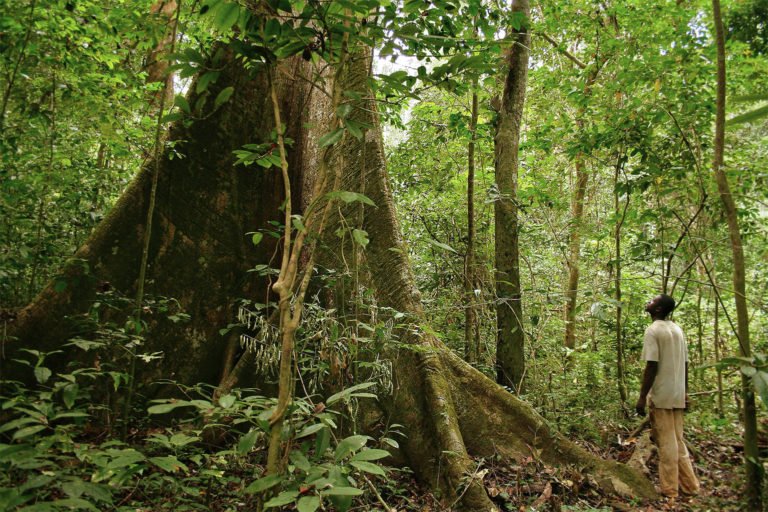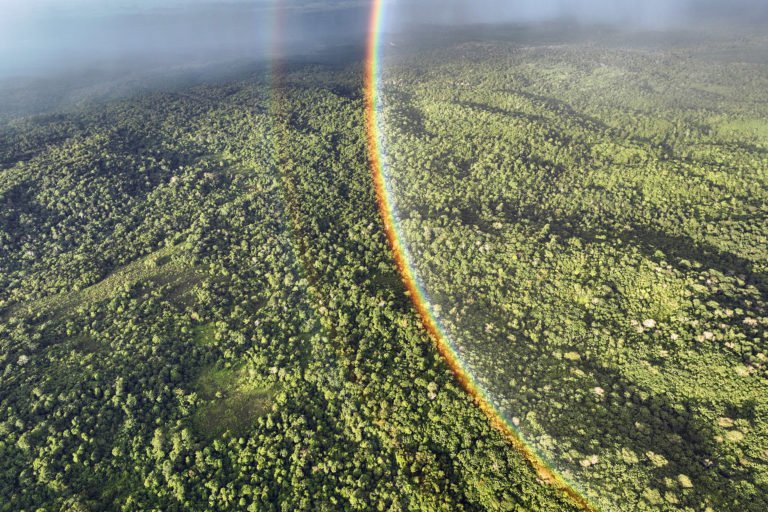- A new study has found that the Papahānaumokuākea Marine National Monument in Hawai‘i, the world’s largest contiguous marine protected area, increased the catch rates of yellowfin and bigeye tunas in nearby fisheries due to a “spillover effect.”
- Between 2016 and 2019, catches of yellowfin tuna increased 54% in waters near the MPA, and catch rates for bigeye tuna rose by 12%.
- Another study found that MPAs not only increase the catches for fisheries, but also yield other benefits, like the enhancement of carbon sequestration and biodiversity.
- However, both studies suggest that the best results come from fully protected MPAs that don’t allow fishing, and that underprotected MPAs yield “little to no social or ecological benefits.”
In 2016, Barack Obama, the U.S. president at the time, made a proclamation: he would expand the protection of the Papahānaumokuākea Marine National Monument, a stretch of ocean fringing the islands and atolls of the Northwestern Hawaiian Islands that native Hawaiians consider to be sacred. Ten years earlier, his predecessor, George W. Bush had protected 139,818 square miles (362,127 square kilometers) of this region. Obama expanded it more than fourfold, to 582,578 mi2 (1.51 million km2), about twice the size of Texas, making it the largest contiguous marine protected area (MPA) in the world. Fishing and extractive activities were banned there.
And now, a new study has shown the benefits of establishing a fully protected MPA at the Papahānaumokuākea Marine National Monument. It found that the MPA increased the catch rates of two migratory species, yellowfin tuna (Thunnus albacares) and bigeye tuna (Thunnus obesus), collectively known as ahi in Hawaiian. This is due to a “spillover effect,” which refers to the positive influence that a no-take zone can have on a nearby fishery.
Published Oct. 20 in Science, the study found that between 2016 and 2019, catches of yellowfin tuna increased 54% in waters near the MPA, while catch rates for bigeye tuna rose by 12%. The catch rates for other fish species grew by 8%.
“I think the common perception of no-fishing zones is that they really are only going to benefit less mobile species, like corals or lobsters … and that the benefits weren’t really going to accumulate for a larger, more mobile species,” lead author Sarah Medoff, a fisheries researcher at the University of Hawaiʻi, told Mongabay. “And so when we found that there was this positive benefit for bigeye and yellowfin, that was completely shocking to us.”
The researchers relied on data from government-appointed fisheries observers working on Hawaiian longline fishing vessels that target both bigeye and yellowfin tuna.
There are 142 longline vessels currently operating in Hawai‘i, according to the Marine Stewardship Council (MSC), which certified the fleet for sustainability earlier this year. It’s estimated that the fleet brings in about $125 million each year in landings of fish like tuna and swordfish, and accounts for up to 99% of U.S.-operated longline fishing in the area.
Globally, the tuna industry is estimated to generate about $40 billion in annual revenue.
Study co-author Jennifer Raynor, a natural resource economist at the University of Wisconsin-Madison, said much of the work done for this study was making sure that other factors, such as climate conditions or differences in types of fishing gear, were not influencing results to give a false sense of the spillover benefits.
“We rule out all those things,” Raynor told Mongabay. “And so we feel really confident that this is a causal relationship, and that the expansion of this monument is what’s causing these increases in catch.”
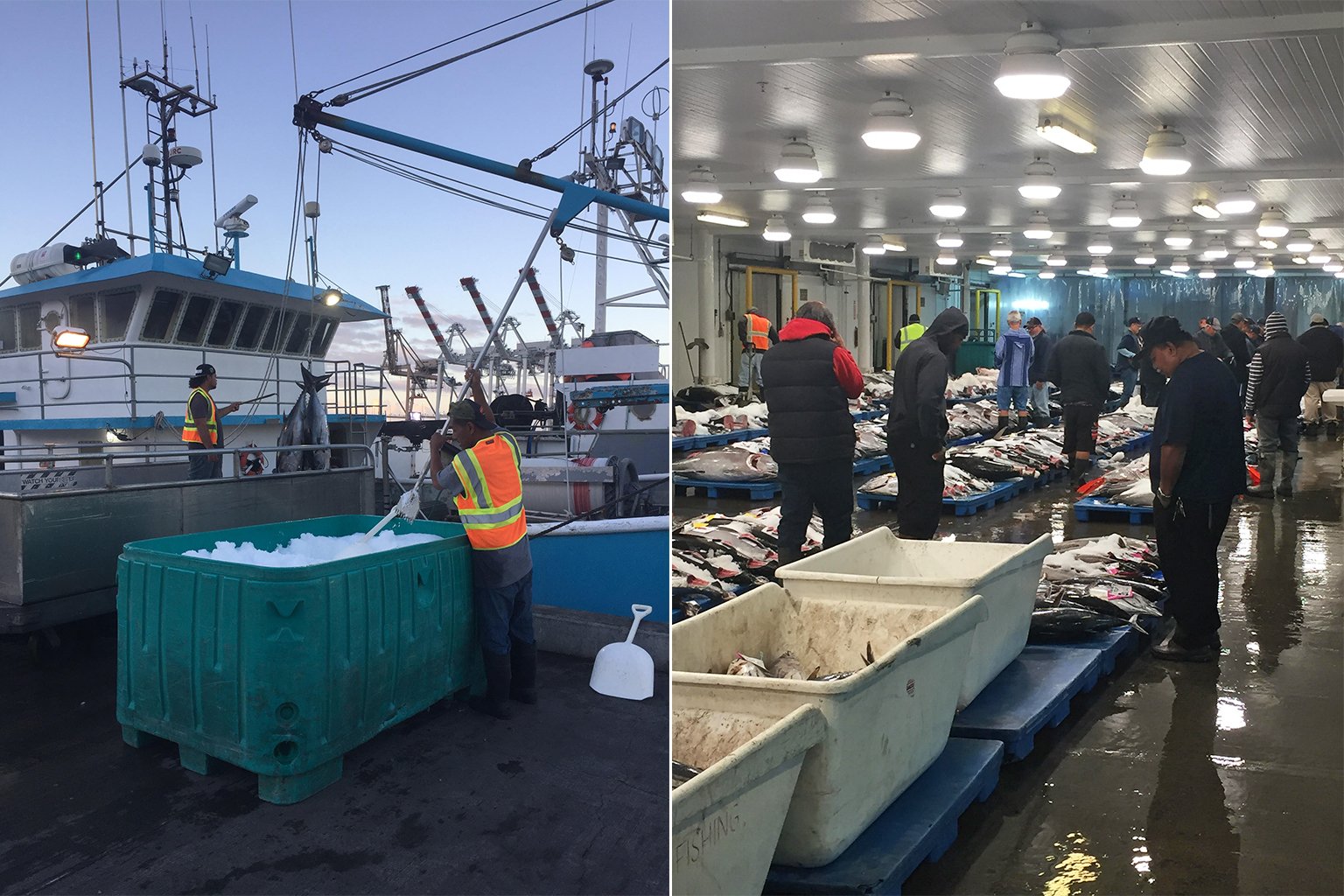
Back in 2016, leaders from the Hawaii Longline Association expressed concern that the enlargement of the PMNM would threaten their ability to work. But a 2020 study published in Nature Communications (co-authored by some of the same researchers who wrote the present study) found that the MPA’s expansion did not economically impact the Hawaiian longline industry, and that revenue was actually 13.7% higher between 2014 and 2017 than it was from 2010 to 2013.
The new study in Science builds on these earlier findings by illustrating the benefits of implementing the enlargement of the PMNM.
Medoff said these positive impacts likely have to do with the fact that the PMNM is large, geographically well-placed, and fully protected from fishing.
“I think the ‘no-take’ [MPA] is probably the gold standard,” she said. “It provides the most conservation that you could possibly attain.”
Another study, published in One Earth on Oct. 21, illustrates similar benefits from MPAs. Researchers analyzed thousands of studies to find that marine conservation measures can help mitigate climate change by enhancing carbon sequestration, biodiversity, and the reproductive capacity of many marine organisms, which yielded fisheries benefits.
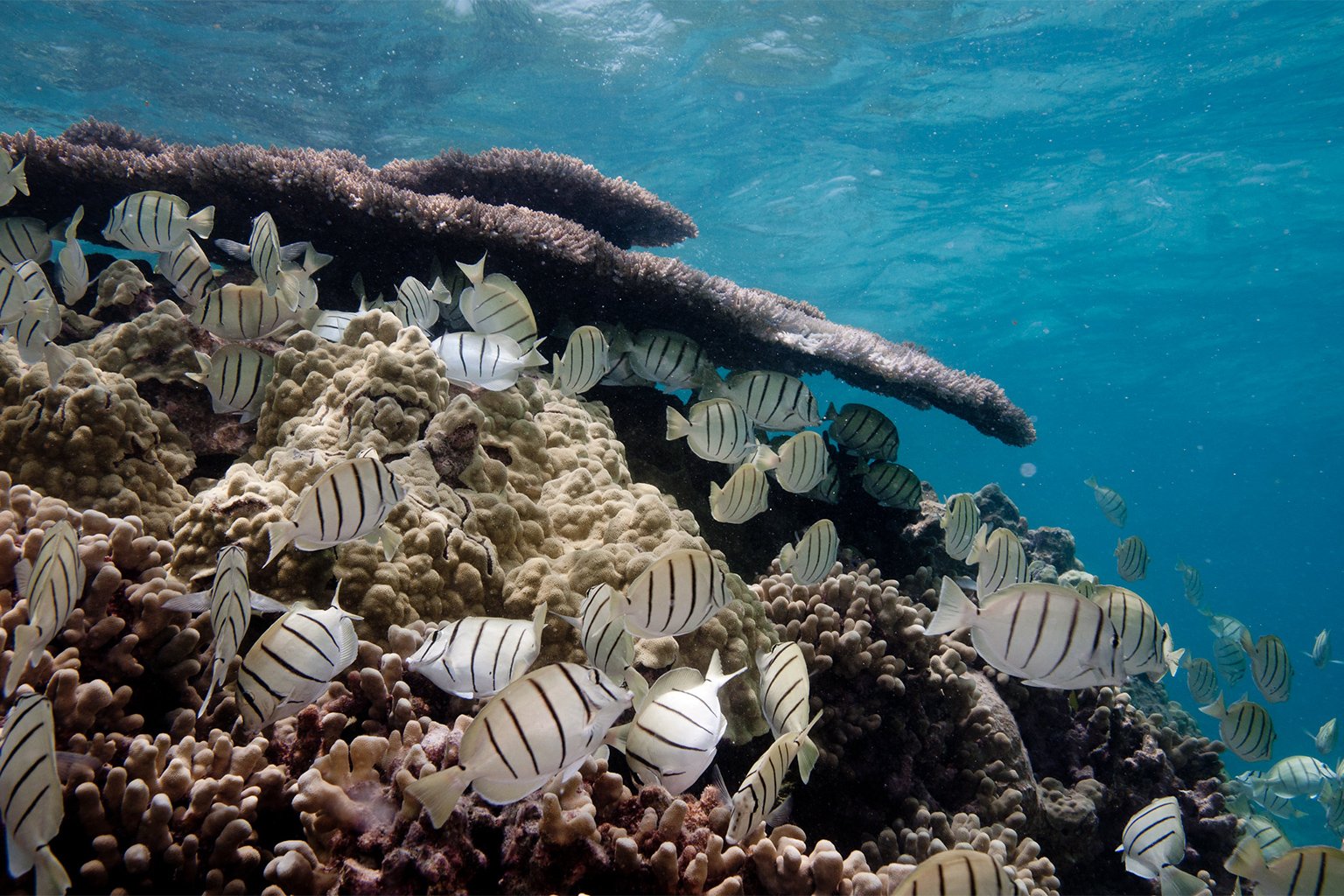
Joachim Claudet, a sustainability researcher at the National Center for Scientific Research in Paris and co-author of the study in One Earth, said the findings of his study complemented those documenting the spillover benefits of the PMNM.
“We found evidence of a positive effect of MPAs on fishers’ catch and on fishers’ income, so it’s exactly the same results,” Claudet told Mongabay. However, he added that his study found these benefits were only apparent in “fully protected areas.”
Claudet said MPAs allowing small amounts of sustainable fishing could still yield some positive benefits, but that MPAs with lower levels of protection have “have little to no social or ecological benefits.”
“We have too many MPAs that are too underprotected to deliver any benefits on biodiversity or on people,” he said.
Only about 6% of the global ocean is currently protected via MPAs, according to the Marine Protection Atlas, a project of the Marine Conservation Initiative. But only 2.4% of these MPAs are fully protected from the impacts of fishing.
Many countries have committed to protecting 30% of their economic exclusive zones (EEZs), the area of ocean spanning 200 nautical miles (370 kilometers) from their coastlines, by 2030. But few have yet to achieve this. There are also ongoing issues to properly monitor and enforce rules in many of the world’s MPAs, and conservation experts say many MPAs are poorly planned.
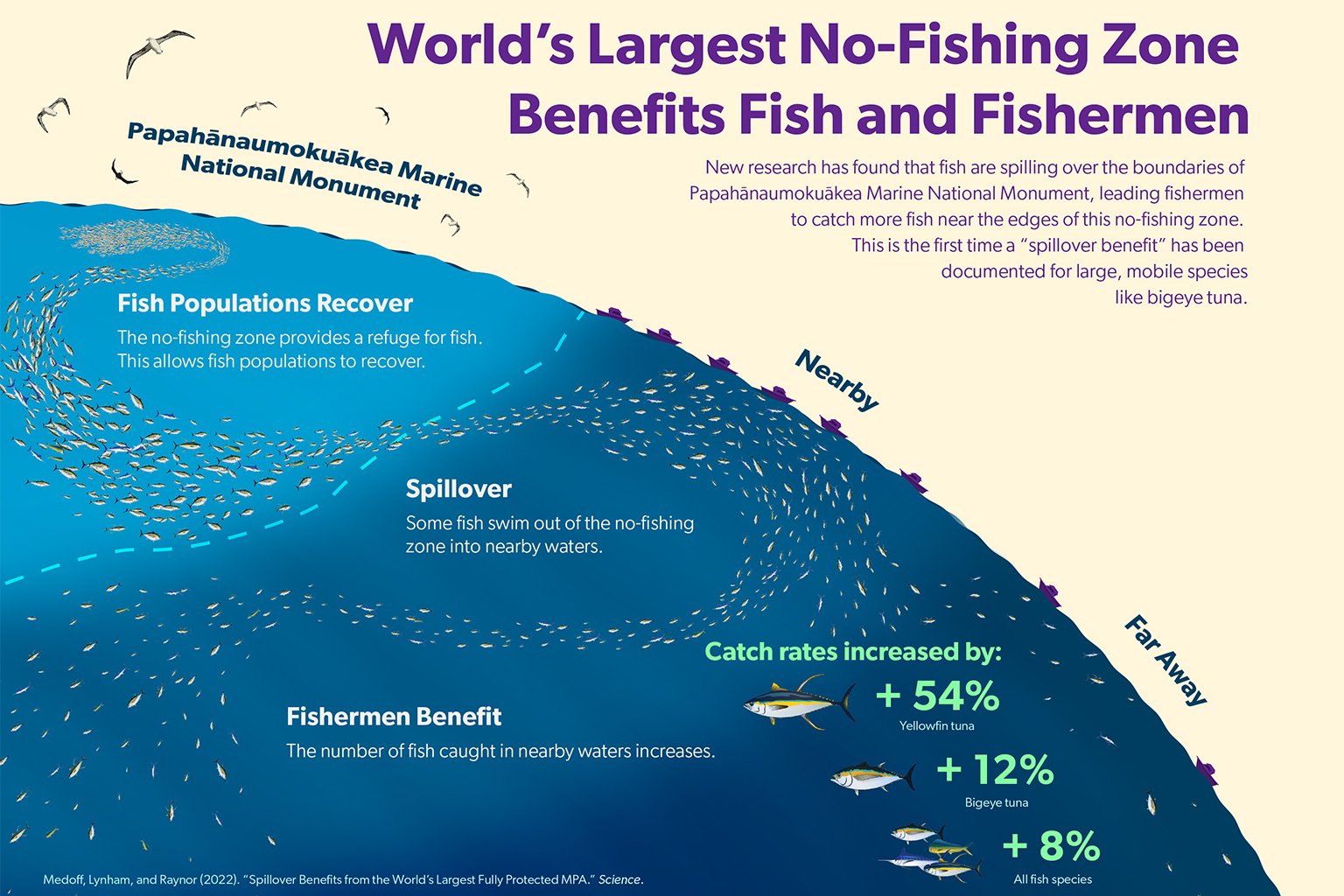
“I think it is really the time to increase the quality of MPAs rather than the quantity,” Claudet said. “There will be a snowball effect because when we have effective MPAs, there is more support by coastal communities for MPAs because they benefit from them, and then it will be easier to increase the number of MPAs.”
When MPAs are properly planned and implemented, the benefits abound, Medoff said.
The study in Science “is a nice sign that these conservation efforts are actually working,” she said. “And it kind of gives us hope that if we can construct a well-thought-out conservation plan, we can reverse environmental damages.”
Banner image: Goatfish at Gardner Pinnacles in Papahānaumokuākea Marine National Monument. Photo by Greg McFall/NOAA via Flickr (Public domain).
Citations:
Jacquemont, J., Blasiak, R., Le Cam, C., Le Gouellec, L., & Claudet, J. (2022). Ocean conservation boosts climate change mitigation and adaptation. One Earth. doi:10.1016/j.oneear.2022.09.002
Lynham, J., Nikolaev, A., Raynor, J., Vilela, T., & Villaseñor-Derbez, J. C. (2020). Impact of two of the world’s largest protected areas on longline fishery catch rates. Nature Communications, 11(1). doi:10.1038/s41467-020-14588-3
Medoff, S., Lynham, J., & Raynor, J. (2022). Spillover benefits from the world’s largest fully protected MPA. Science, 378(6617), 313-316. doi:10.1126/science.abn0098
Elizabeth Claire Alberts is a staff writer for Mongabay. Follow her on Twitter @ECAlberts.
FEEDBACK: Use this form to send a message to the author of this post. If you want to post a public comment, you can do that at the bottom of the page.



